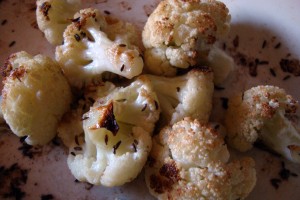 Last week, I talked about the estrogen production in the body and how the enzyme aromatase was a key player in regulating how much estrogen your body makes. Once it’s made, it needs to be transported to the tissues and cells, for example reproductive tissue, bone, and brain, where it functions in a number of signaling pathways.
Last week, I talked about the estrogen production in the body and how the enzyme aromatase was a key player in regulating how much estrogen your body makes. Once it’s made, it needs to be transported to the tissues and cells, for example reproductive tissue, bone, and brain, where it functions in a number of signaling pathways.
Estrogen (in the form of estradiol, and testosterone) is transported by a large protein called SHBG. Think of SHBG as a school bus carrying lots of children (estrogens) to where they need to go, letting them get off when they should get off. If the number of school buses is too low, then there are children loose all over the street–this is not a good thing, so it’s important that we make enough SHBG.
What are some of the factors that result in not enough SHBG? Fat fat cells. Believe it or not, fat cells can be too fat, and when they are, they don’t work. If you remember, last week, I wrote about how VAT increases inflammation, which stimulates aromatase to make more estrogen. When VAT cells are too fat, they contribute to insulin resistance and a rise in insulin levels, resulting in less SHBG (and chaos on the streets!). This means that excess fat can both increase estrogen and decrease SHBG.
If estrogen does arrive safely and does its job, in the liver, it then needs to be converted into an intermediate form, which is actually more dangerous to the body than free estrogen, and then it’s transformed into its final, safer form to be eliminated from the body through the feces.
The conversion process is one place where a surprising number of people can have problems. For example, a process called methylation is carried out which adds a methyl group to estrogen. Some people are poor methylators, either because of genetic variations in the genes responsible for this, or because of poor diet and the lack of nutrients needed. As a result, besides the BRCA1 and 2 genes that are risk factors for developing breast cancer, genes involved in detoxing estrogen (COMT, CYP17, CYP1A1, GST) have also been implicated as risk factors for breast cancer.
If estrogens are safely neutralized, they’re transported via the bile to the feces to be excreted; however, the story is still not over. Gut bacteria can produce an enzyme called b-glucoronidase that can transform the inactivated estrogen back into an active form that’s taken back up into the body. The enzyme is more active in an unhealthy gut and constipation will also increase the chances of reuptake, which is why good digestion and elimination is so important. Stress will also increase the activity of this enzyme.
So how do you ensure that you’re detoxing and removing estrogen safely? Here are a few tips:
- eat your cruciferous veggies: broccoli, cabbage, cauliflower – they’re sulfur containing and produce something called I3C that is involved in estrogen detoxification and balance;
- take high quality supplements that support processes like methylation. I carry a number of supplements that support healthy detox. Contact me for recommendations;
- eat a plant-heavy diet with lots of fiber to keep your digestion running smoothly and get any animal sources of protein from grass-fed, organic, animals;
- keep your gut bacteria healthy with a good probiotic. I can offer you a number to choose from depending on your health situation;
- keep or get your weight at ideal levels so that your fat cells work to maintain a positive impact on insulin, blood sugar, and inflammation.
If you’re struggling with your health because of hormone imbalances, I can help you make changes that will transform your health now and help you move into a healthy future. Contact me to see if my support is a good fit for you.

